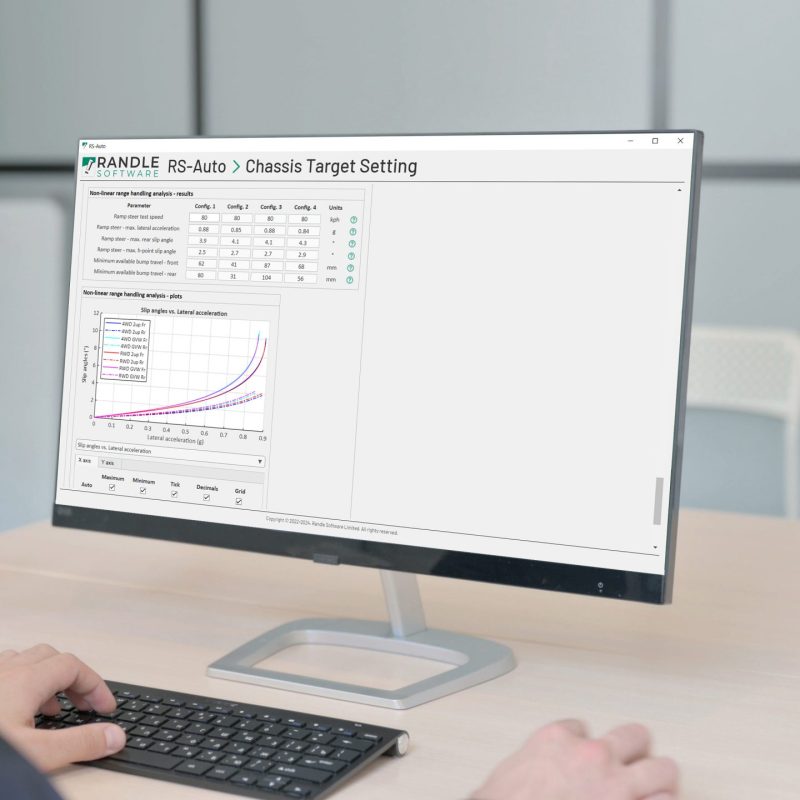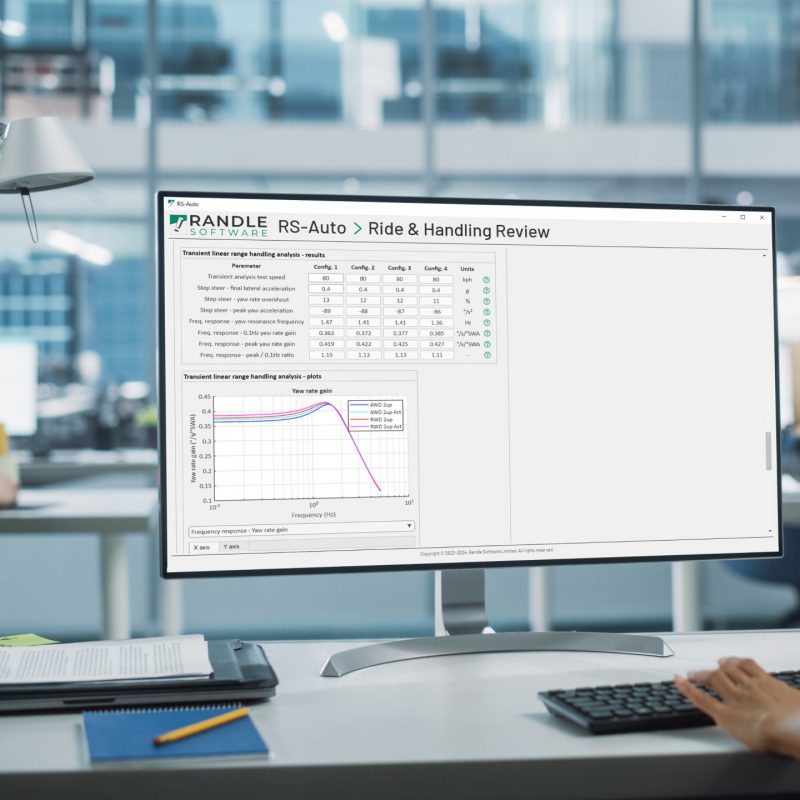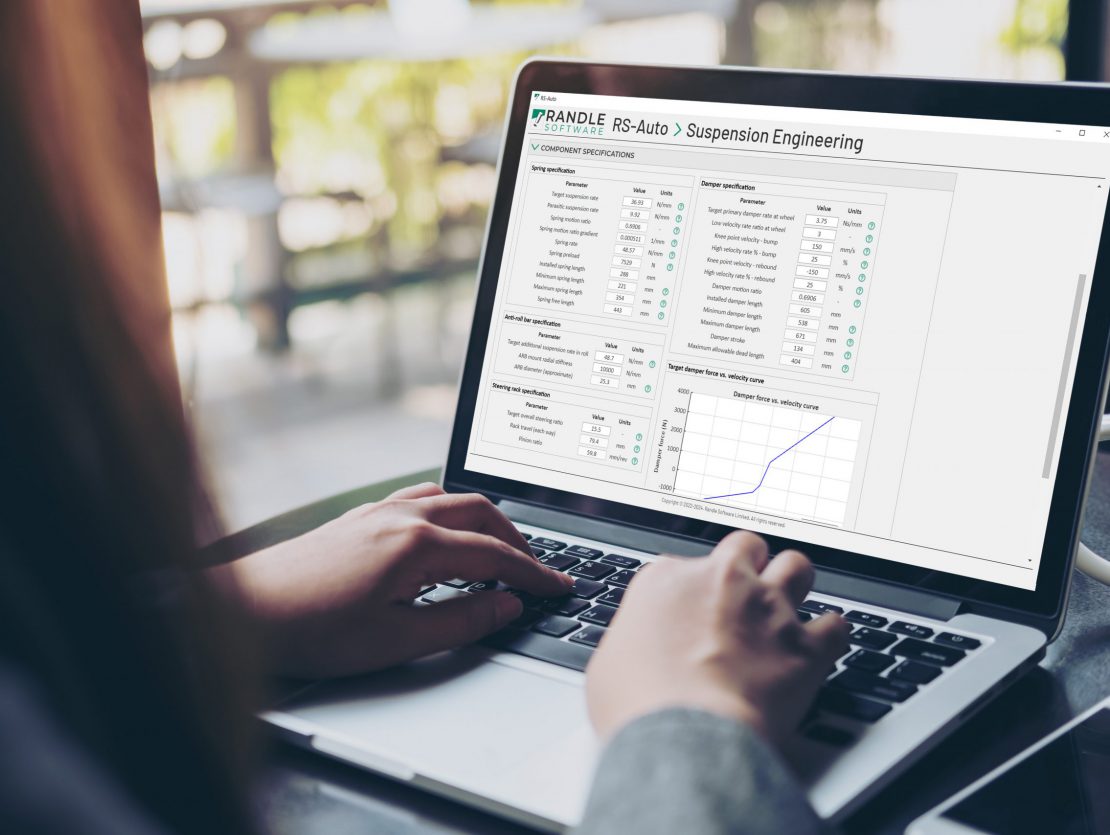
Commercially available design & analysis tools
Randle Software is dedicated to releasing novel software products directly to the market, building on the expertise of the consultancy business.
Initially focussed on the Automotive industry, the goal is to provide flexible tools that slot into customer processes reducing development timeframes & costs whilst maintaining quality.

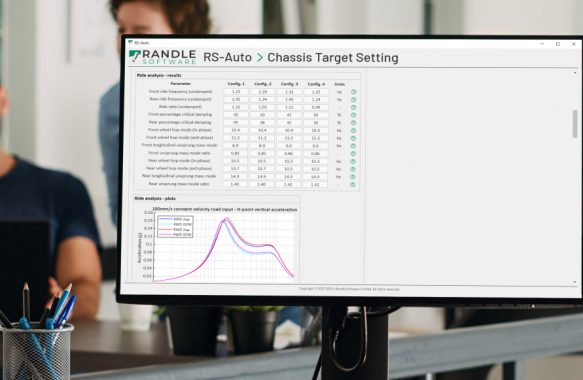
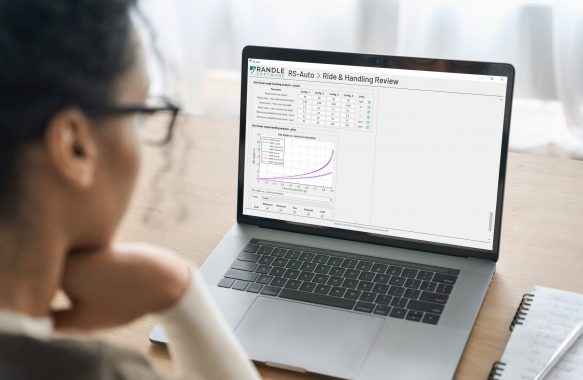

About us
Randle Software is a sister company to Randle Engineering dedicated to releasing novel software tools directly to the market.
Leaning on Randle Engineering’s extensive experience in the industry, the business is focused on developing applications that address specific needs in the automotive engineering community. The goal is to provide effective tools that slot into customer processes reducing development timeframes & costs whilst maintaining quality.
Operating from the UK, our flexible cloud-based deployment strategy allows us to securely support customers of all sizes around the globe on a tailored subscription basis.
Read on to learn more about our unique toolsets, and get in touch to gain access to a free trial.
Introducing our core product
RS-Auto is an ecosystem of design and analysis modules that target specific parts of the vehicle engineering process.
The current suite of modules includes Chassis Target Setting, Suspension Engineering and Ride & Handling Review. Over time additional modules will be introduced and where appropriate modules share data sets to deliver an efficient & robust workflow.
The primary USP of this toolset is speed of operation and the engineering insights this brings. Lightweight models and mathematics are selected to answer each specific question, balancing fidelity and computational efficiency. This approach gives the user full control over the solution, allowing the design process to proceed logically and repeatably.
Calculate your required suspension characteristics
This unique tool calculates suspension & steering system level targets based on objective vehicle level targets and fixed input data.
The module uses a non-iterative target cascade process allowing the user to identify robust targets quickly and assess target trade requirements whilst maintaining consistency across the target book.
The tool is able to simultaneously consider multiple platform variants and configurations, presenting the user with a full ride & handling analysis of each permutation.
Ultimately this expedites the concept definition phase of a vehicle programme whilst de-risking latter stages making it a valuable asset for any chassis engineering team.
Design & analyse your suspension concept
This module completes a system to component level target cascade, allowing the user to progress to a fully worked suspension concept.
Hardpoints are generated from kinematic targets and packaging constraints, ensuring a viable solution is achieved even when other limitations are applied. A lightweight compliance analysis is completed, considering joint, component and body stiffness contributions. Finally, spring, damper, ARB and steering rack component requirements are calculated based on prescribed targets.
There is a strong focus on non-iterative methods allowing the user to efficiently evaluate design options whilst maintaining consistency across the target set, shrinking design timescales and minimising risk.
Efficiently assess vehicle performance
This tool completes a ride & handling analysis using sets of vehicle, suspension and tyre data.
The tool can be used to benchmark competitors, producing a concise suite of objective data that can be translated into vehicle targets. Alternatively, the module can be used as a design validation tool comparing actual performance against target, allowing the user to fully evaluate target trades. The analysis format matches the Chassis Target Setting (CTS) module, ensuring methods and results are consistent.
The library structure of the input data allows multiple vehicles to be considered in a single analysis, shortcutting slow post-processing routines. Data, targets and results can be imported from the CTS module to efficiently seed a new analysis. K&C data from the Suspension Engineering module can also be directly imported.

